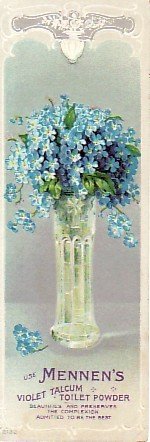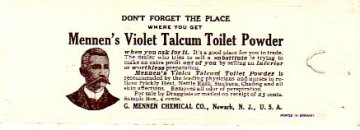

|
As we discussed in Part I of this series on Literary Ephemera, every bookseller is familiar with such things as money, playing cards, tickets, postcards, calling cards and photographs discovered in an old book. Obviously, tales of found money seem to elicit the most excitement, but it is always a thrill to discover an item long buried inside a book that may turn out to be worth more than the book itself. Aside from such accidental ephemera, bibliophiles seek any item made for a literary function. Perhaps the earliest example of literary ephemera specifically manufactured for the book trade is the bookmark. In the early history of the book, very few volumes were paginated or had tables of contents. Manuscript leaves were often unnumbered, making it difficult to quickly locate a particular passage or resume reading a page. Necessity being the mother of invention, it wasn't long before bookmarks arrived on the literary scene, making retrieval of information a far easier task. Although bookmarks have been produced in a variety of materials including valuable metals and jewels, for the purpose of this article, we will limit our discussion to bookmarks produced in more ephemeral forms. According to The Encyclopedia of Ephemera, edited by Maurice Rickards, early bookmarks were known as "registers" and three types were in use as early as the fifteenth century: "Narrow protruding slips of vellum or parchment would be attached to certain leaves of the manuscript or book; a narrow band of silk ribbon or cord would be fastened to the volume for use between any of the leaves, which might then be embroidered or otherwise embellished; or a loose marker, which might take several forms, would be used which could be moved from volume to volume." By the nineteenth century, bookmarks were no longer called "registers," but were known as "markers" or "bookmarkers." Starting around 1840, craft bookmarks were in vogue, consisting of perforated paper to be embroidered with colored thread, cut into a rectangle shape and attached to a silk ribbon. These lovingly crafted markers - often embroidered with religious mottoes to be inserted in Bibles - were frequently given as gifts to friends and family.

An early reference alluding to the use of Victorian bookmarkers is found in Mary Russell Mitford's Recollections of a Literary Life, published in 1852, in which she states, "I had no marker and the richly bound volume closed as if instinctively." In the 1860s, manufacturers began producing markers of machine-woven silk, with industry centered in Coventry, England, where Thomas Stevens became famous for his elaborate designs woven in hundreds of different patterns on silk. Bookmarks and pictures produced by him became known as Stevengraphs. Due to their small size, usefulness and decorative qualities, woven silk markers were prized gifts in the Victorian era and continue to realize good prices on eBay. By the end of the 1870s, concurrent with the invention of chromolithography, the printed paper bookmark made its debut. Almost immediately, the commercial potential of bookmarks was recognized by advertisers, who began using them as free giveaways. Since an attractive bookmark was likely to be used on a daily basis, it was perceived by manufacturers as the ideal vehicle on which to print colorful advertising. Insurance companies, book publishers and all types of household product manufacturers commissioned stunning bookmarks to highlight their products. Here is an early chromolithographed advertising bookmark for Mennen's Violet Talcum Powder.

Details of the product are described on the reverse side.

Along with advertising, the new medium of bookmarks was used for patriotic purposes, including government propaganda and Civil War veteran reunions. This example produced for the 1879 Michigan Governor's Levee was found lightly pasted in a Victorian scrapbook and recently sold on eBay for $107.50.

Some bookmarks display beautiful Art Nouveau or Art Deco motifs and are collected purely for their aesthetic qualities. A series of 12 bookmarks illustrating the months of the year was issued by The Scottish Widows' Fund in the years 1910-1912, using artwork by the famous English illustrator, Walter Crane.
>>>>>Click here for page two>>>>
Questions or comments?
| Forum
| Store
| Publications
| BookLinks
| BookSearch
| BookTopics
| Archives
| Advertise
| AboutUs
| ContactUs
| Search Site
| Site Map
| Google Site Map
Store - Specials
| BookHunt
| BookShelf
| Gold Edition & BookThink's Quarterly Market Report
| DomainsForSale
| BookThinker newsletter - free
Copyright 2003-2011 by BookThink LLC
|

|
|